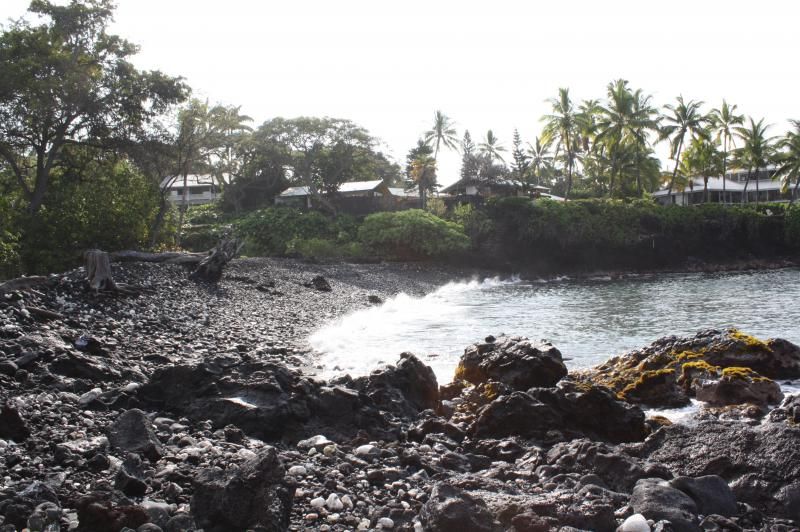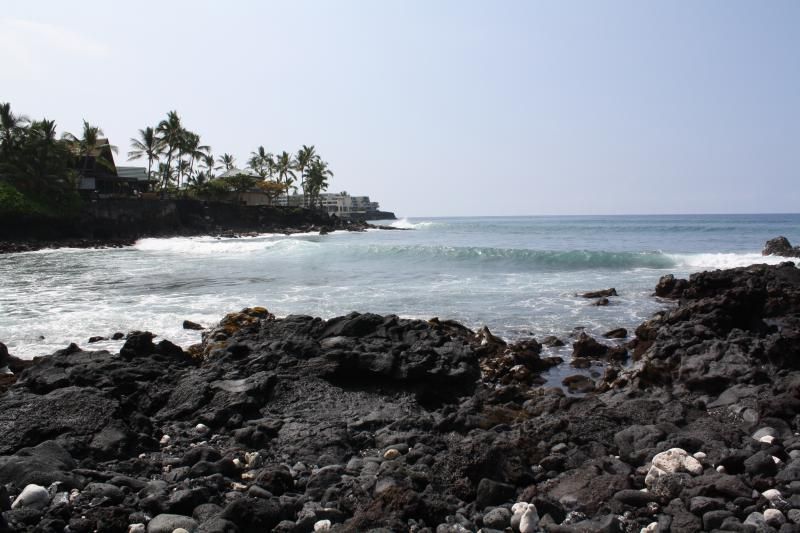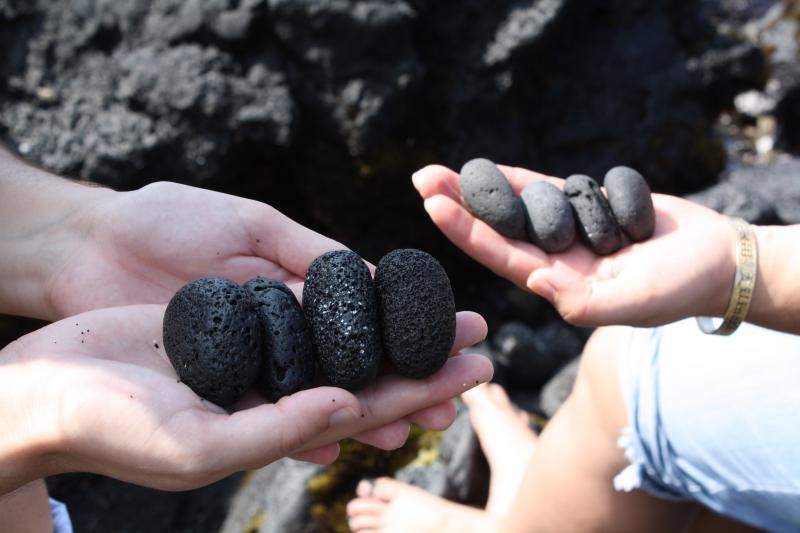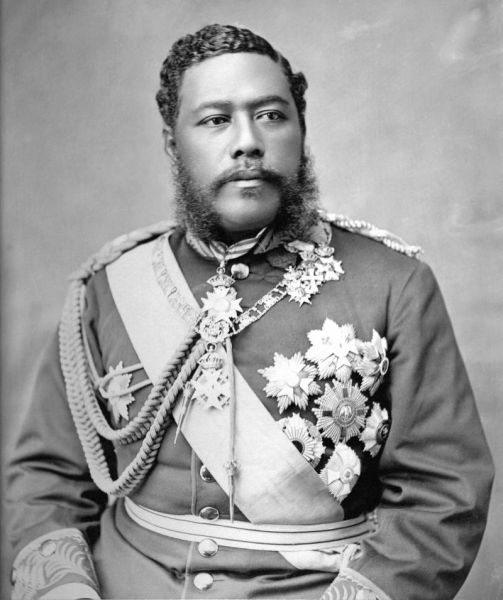Digital Collections
Celebrating the breadth and depth of Hawaiian knowledge. Amplifying Pacific voices of resiliency and hope. Recording the wisdom of past and present to help shape our future.
Kīhei de Silva
Haku mele: Unknown.
Sources: Kuluwaimaka Collection, HI. M.51.1:94, Bishop Museum Archives. Emma Fern and John Silva in Mader, MS Grp 81, 7.3, Bishop Museum Archives. Charles E. King, King’s Book of Hawaiian Melodies, 35 (King credits J. Kalahiki with putting the chant to music). Dorothy Kahananui, Music of Ancient Hawai‘i, 20. Nona Beamer, Nā Mele Hawai‘i, 50.
Discography: Johnny Almeida, 49th State HRC-146A (78rpm); re-released on Vintage Hawaiian Treasures Vol. 4: Mele Hula Hawaiian Style, Hana Ola HOCD 2000. Kalama Quartette, Okeh 41414; Nā Leo Hawai‘i Kahiko, BPBM Museum ARCS-1. Henry Moikeha Pa, Mele Hula, Noelani NRS102. The Sons of Hawai‘i, Music of Old Hawai‘i, London SW99296. Sunday Manoa, Waimea Music Festival, Panini 2PS-1006. Palani Vaughn, Iā ‘Oe E Ka Lā – 1, Nakahili NP100.
Text below: All but verses three and eight are from the Mader Collection of the Bishop Museum Archives. The two additional verses are transcribed from the 1990 Merrie Monarch performance of Hālau o nā Maoli Pua.
Translation: Kīhei de Silva following Kawena Pukui’s translations in the Mader Collection.
Aia i He‘eia lā
Ka nalu e he‘e ana
He‘e ana i ka lala lā
Ho‘i ana i ka muku
He pakika he pahe‘e lā
He pahe‘e i ka pu‘e one
A na‘u i kīkaha lā
A‘o ia ‘aekai
A he kuhihewa ko‘u lā
Aia i ka poli
Hapapa hewa au lā
I ka maka o ka moena
‘E‘ena ia manu lā
Noho mai i ke kuahiwi
Ke ala nihi a‘e lā
Ka ‘uwea holuholu
Ha‘ina mai ka puana lā
No Kalākaua nō he inoa.
There at He‘eia
Are waves for surfing
Some are breaking to the left
And others to the right
They slip and slide.
Smoothly over the sandbar
It was I who glided
All the way to shore
But I was mistaken
About finding love there
I groped about in vain
On the meshes of the mat
But the timid bird
Had retired to the mountains
The way is precarious
Like a swaying tightrope
This ends the song
In honor of Kalākaua.
In some ways, the mele "Aia i He‘eia" is a victim of its own accessibility. Because its words are so easily obtained from contemporary recordings and 20th century songbooks, the complacent performer is easily misled into assuming that these versions are faithful to the early texts. Because He‘eia is an immediately recognizable Windward O‘ahu place-name, the same performer is easily lulled into assuming that the mele is set in Ko‘olau Poko. Not so on either count. The popular "He‘eia"—the 10-line, so-called mele ma‘i that ends with "‘O Hālala i ka nuku manu"—is actually an abbreviated version of an older name chant for David Kalākaua. The action of his mele inoa, moreover, takes place at He‘eia Bay in Keauhou, Kona, Hawai‘i.
Serious students of "Aia i He‘eia" are advised, therefore, to consult the Kuluwaimaka, Fern/Silva, and H. D. Beamer texts that are housed in the Bishop Museum Archives. Of these, the Fern/Silva and Beamer texts are especially valuable since they were collected in 1935 by Huapala Mader who subsequently met and corresponded with Kawena Pukui concerning the proper translation and interpretation of the mele. Pukui’s two translations of 1935 and 1962, as well as several pages of notes and commentary, are included in the Mader files. Probably the two most important pieces of information shared by Pukui involve the issues of Hālala and He‘eia, of chant-type and place-name:
"Heeia" was a mele inoa commemorating an incident during a visit—and ended with "No Kalakaua no he inoa." But in later years I was surprised to hear it end with "Halala i ka nuku manu." Halala was the name given to the genital of Kalakaua in infancy and nuku manu ("beak of the birds") meant that it was praised by the people. In meles, people are often spoken of as birds. "Heeia" was not originally a mele ma‘i—that is a praise of the genitals. [Pukui to Mader, 1-27-1962, Mader Collection, MS. Grp 81, 3.35.]
I know the Heeia on Oahu very well—the reef is outside and the sea inside is too shallow for surfing. I believe that the Heeia referred to is the one in Keauhou, Kona, Hawai‘i . . . Surfing at Oahu’s Heeia is utterly impossible. [Ibid.]
"Aia i He‘eia," as transcribed by Mader and reviewed by Pukui, tells the humorous story of Kalākaua’s efforts to impress an apparently unimpressible lady with his skill at surfing. The He‘eia of this mele is a cup-shaped, pebble-strewn cove on the northern tip of Keauhou Bay; its twin breaks, Kaulu and Kalapu, were well-known to the ali‘i of the 18th and 19th centuries (Ben Finney, "Surfing in Hawai‘i," Journal of the Polynesian Society, 337). It would have been a simple thing for Kalākaua to travel the short distance south from his summer residence at Kahalu‘u beach (a replica of this home stands on the grounds of the misnamed Keauhou Beach Hotel). Perhaps he went by canoe with a 20-foot, 150-pound olo board in tow; perhaps he practiced lele wa‘a, the royal sport of leaping from canoe to surfboard as a wave rolled and surged beneath him. In any case, the chant tells us that he was a highly skilled surfer, one familiar with the muku and lala waves, and familiar, as well, with the art of angling his nearly unwieldy board to the right or left of the break in order to maximize the length and pleasure of his ride. We know, too, that on this occasion, his expertise went for naught. His surfing may have been awesome, but when he returned to his moena, hoping to enjoy there the "bird" he had meant to impress—‘auē! She had flown off to her mountain home.
The mele invites us to share in the humor of the situation: even Kalākaua can be unlucky in love. We are allowed to laugh with him over his misfortune, and as a consequence of our shared laughter, we are led into celebrating his name—"No Kalākaua nō he inoa"—with considerable gusto and intimacy. The informality of "Aia i He‘eia" is characteristic of the poetry of Kalākaua’s dynasty; John Charlot reminds us that the purpose of this informality was not to dilute the king’s dignity, but to encourage the affection and personal devotion of his people (The Hawaiian Poetry of Religion and Politics, 10–11).
Students of mele composed for William Charles Lunalilo, Kalākaua’s predecessor, will recognize that the first two verses of "Aia i He‘eia" are borrowed directly from "‘Auhea ‘o Kalani," a surfing chant composed for Lunalilo in commemoration of a visit he made to the districts of Puna and Ka‘ū in the 1860s: "‘Auhea ‘o Kalani lā / Aia i ka he‘e nalu / He‘e ana i ka lala lā / Ho‘i ana i ka muku." If one characteristic of Kalākauan poetry is its personal tone, another is certainly its appropriation and re-cycling of earlier chants. As for the difficulty of translating the surfing terms, lala and muku, that appear in both compositions: I am of the opinion that these describe waves that break, respectively, to the right and left. Notes to the Kuluwaimaka text corroborate this interpretation:
Uhai oe i kela wahi o ka nalu e haki maila, a hiki ilaila, hoihoi i hope nei, oia hoi ho‘oiho pololei oe i ka papa iuka. O ka akau, oia ka lala, o ka muku oia ka hema.
Proceed to the spot where the waves break; when you get there, turn back; that is to say, point the board straight back to shore. To go to the right is called lala; to go to the left is called muku. [Translation mine.]
Although condos and luxury homes now ring He‘eia Bay and obscure it completely from view, the bay can still be visited by following an asphalt footpath that begins a half block before the gates of the Kanaloa Condominium Resort. Because of He‘eia’s proximity to this resort, residents of the area now mistakenly call their home "Kanaloa Bay" (frequently mispronounced "Kānalua"), and they respond to requests for directions to He‘eia with vacant stares and incomprehension. Thus do the storied places of our great-grandparents slip through our fingers—like timid mountain birds from self-absorbed ali‘i—and fade completely from view. Thus does a funny, old mele take on frightening, new connotations.
The essay above was written by Kīhei de Silva and published in his book He Aloha Moku o Keawe: A Collection of Songs for Hawai‘i, Island of Keawe, Honolulu, 1997, pps. 37–39. It is offered here, in slightly revised and updated form, with his express consent. He retains all rights to this essay; no part of it may be used or reproduced without his written permission.

photo credit: Kapalaiʻula de Silva
Heʻeia Bay, Kailua, Kona, Hawaiʻi.

photo credit: Kapalaiʻula de Silva
Aia i Heʻeia lā ka nalu e heʻe ana – There at Heʻeia are waves for surfing.

photo credit: Kapalaiʻula de Silva
Picking ʻiliʻili on the shore at Heʻeia.

photo credit: Wikimedia Commons
David Kalākaua, the royal surfer for whom "Aia i He‘eia" was composed.